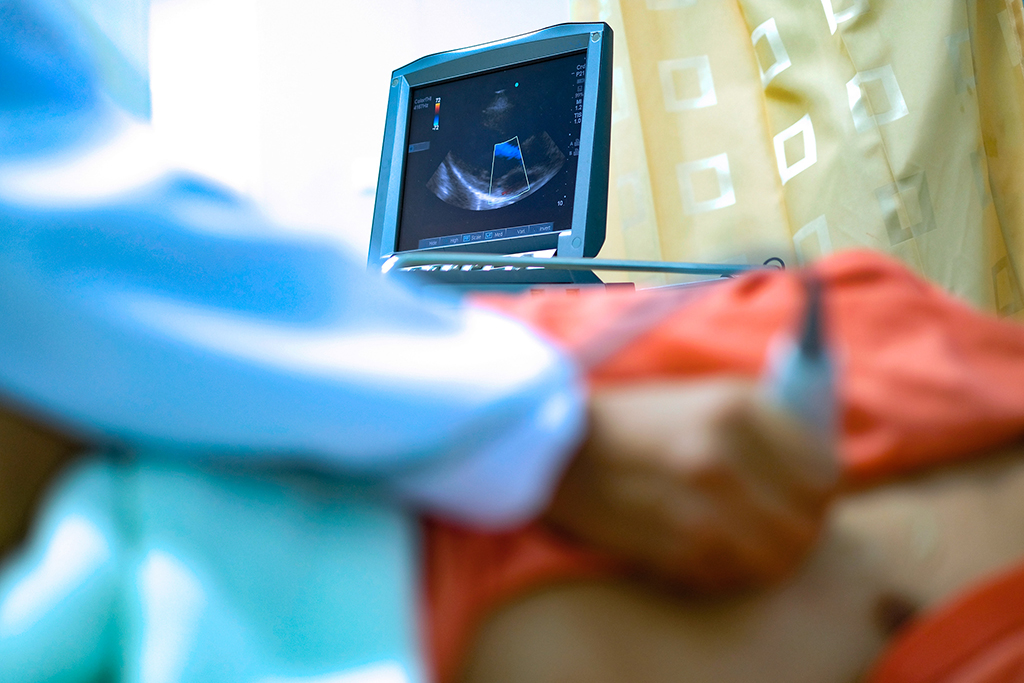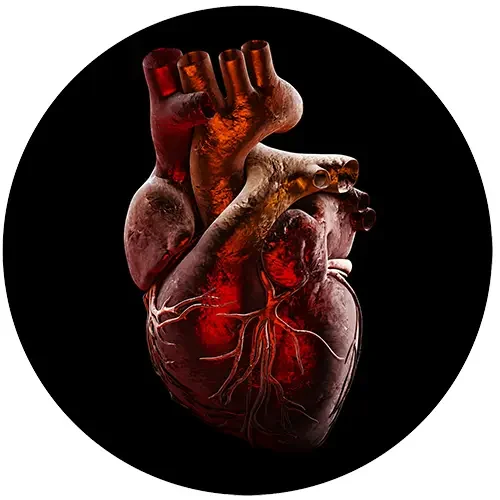An ordinary echo is called a transthoracic echocardiogram because images are made with the ultrasound source outside your chest. The test is often done in a cardiologist's office. You don't need any special preparation. The process should take about 40 minutes to an hour. In this procedure, you will be asked to undress from the waist up and lie on the examination table. They will attach electrodes to various parts of your chest to help measure the electrical currents in your heart, as in an EKG. Then the sonographer will spread gel on a transducer (or "wand") to help the sound waves pass through your skin and to your heart. This transducer produces sound waves that bounce off of the heart and back to the device. The transducer is firmly pressed against your skin and moved across your chest to measure different parts of your heart. A computer converts these echoes into images on a monitor. You may be asked to breathe in a certain manner or roll onto your side to produce better images.
There are no risks involved with a standard echocardiogram. You may feel minor discomfort when the transducer is pressed against your chest firmly. However, this is needed to produce clear images of the heart.
What kind of information can your doctor obtain from these images? The echo measures the sizes of your heart chambers and thickness of their walls. Unusually thick walls of the left ventricle, which pumps blood out to the body, are typical in HCM. If your left atrium is particularly large, it can make atrial fibrillation more likely. Patients with very advanced heart failure caused by HCM can have a left ventricle with an unusually large volume.
An echo gives an estimate of the pressure gradient across the aortic valve. This is a measure of the difference in pressures between the blood inside the left ventricle and just outside it, in the aorta. Ordinarily the pressure difference is about zero. But if you have obstruction (also called outflow tract obstruction), the pressure in the ventricle can be much higher than in the aorta. This pressure is shown as mm/hg on your doctor's report.
An echo also gives an estimate of the ejection fraction (EF). This is the percentage of blood in the left ventricle that is pumped out during an average beat. Damage to the heart muscle, and many heart defects, can also be identified from an echo. An echocardiogram will help find parts of the heart wall that are not pumping normally. Valve problems can be seen on an echo. This includes flow in the wrong direction across valves, also called regurgitation.
The report on your echo will include many different numbers, usually identified by abbreviations. This can be hard to read without training. It is sometimes tempting to look up individual numbers on the web to see which are abnormal. We urge you to resist this temptation if you can! Many of these numbers can't be properly interpreted by themselves. The data from your echo needs to be interpreted as a whole, and this takes training. Your doctor should provide you with an overview of what the echo results mean.
One important thing to realize about echocardiograms is that the numbers measured are not constant. Measurement of your gradient varies among echos, depending on the sonographer, the equipment used, and on things like how well hydrated you are when it is measured. The numbers are meaningful, but small changes do not necessarily mean that your disease is becoming worse, or better.
Stress echocardiograms and transesophageal echocardiograms use the same basic technology as ordinary echos.










